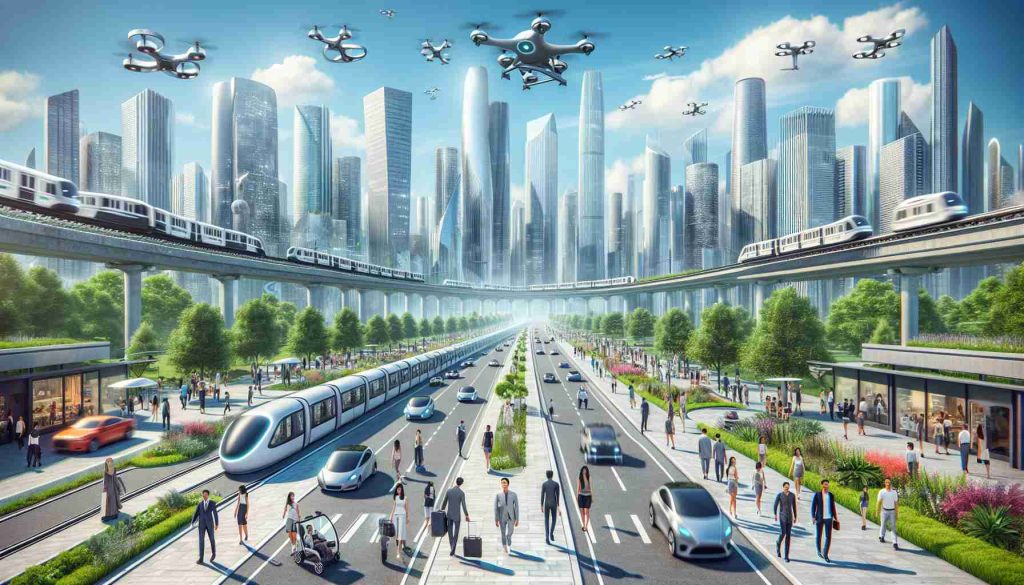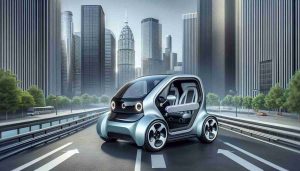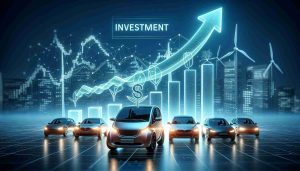Revolutionizing Transport: The Future is Here
5 min read
A New Era of Mobility
The landscape of transportation is undergoing a monumental change with the rise of autonomous vehicles, a market that represents cutting-edge technological advancements in the automotive sector. These vehicles are not only designed for personal commuting but also cater to logistics and public transport needs, addressing the growing consumer demand for safer, efficient, and eco-friendly travel solutions.
The surge in interest within this sector is fueled by innovations in artificial intelligence, machine learning, and sensor technologies, making autonomous vehicles reliable and adept at navigating intricate environments. Collaborations between manufacturers, technology companies, and regulatory bodies have streamlined the process of bringing these vehicles to market faster than ever.
A strong focus on sustainability is propelling the demand for autonomous vehicles, particularly those that are electric, aligning well with global efforts to curb carbon emissions and improve air quality. The integration of advanced technologies is also fostering consumer awareness of the benefits such vehicles offer, including convenience, safety, and potential cost reductions.
The market is diversifying, encompassing various segments like traditional, hybrid, and electric vehicles, each designed for specific applications. As leading companies such as BYD, BMW, and Tesla push forward with innovation and market presence, the journey toward a future filled with autonomous vehicles looks promising.
Despite tremendous opportunities, challenges remain, particularly concerning regulatory frameworks and infrastructure. Addressing these factors will be key to unlocking the full potential of autonomous vehicles in transforming urban mobility.
Implications of Autonomous Vehicles on Society and the Global Economy
The rise of autonomous vehicles is poised to have profound implications for society and culture, reshaping not only how we travel but also the very fabric of urban living. As cities begin to integrate these technologies, we may witness a shift in urban planning. Parking spaces, for instance, could be repurposed into green spaces or community areas, fostering a more livable environment. Additionally, the introduction of shared autonomous vehicle services could redefine ownership models, promoting a communal approach to transportation that reduces the need for personal car ownership.
From an economic perspective, the autonomous vehicle market is expected to contribute significantly to job creation in tech-driven sectors while simultaneously displacing traditional jobs in driving and transport logistics. This dichotomy presents both opportunities and challenges for the workforce, prompting an urgent need for training and upskilling initiatives.
Moreover, the environmental benefits are noteworthy; analysts predict that widespread adoption could lead to reduced traffic congestion and lower carbon emissions, aligning with global targets for sustainability. However, increased reliance on these technologies raises questions about energy consumption and resource use in manufacturing processes.
As future trends develop, consumer attitudes towards privacy and data security will become increasingly important. The ability of these vehicles to collect vast amounts of data could spark a societal debate on the balance between innovation and individual rights. Ultimately, the transition to autonomous mobility is not just a technological shift, but a cultural transformation that will redefine how we view transportation itself.
The Future of Autonomous Vehicles: Innovations and Trends You Need to Know
A New Era of Mobility
The landscape of transportation is currently experiencing a seismic shift with the introduction and expansion of autonomous vehicles (AVs). This transformation is reshaping personal commuting, logistics, and public transport, while also responding to a growing consumer desire for safer, more efficient, and eco-friendly travel options.
# Key Innovations Driving Autonomous Vehicles
Autonomous vehicles are at the forefront of several technological advancements that enhance their functionality and reliability. Innovations in artificial intelligence (AI), machine learning, and sensor technologies are crucial in enabling these vehicles to navigate complex environments with precision. Features such as Lidar, radar, and camera systems allow AVs to scan their surroundings and make informed decisions in real-time, enhancing safety and efficiency.
# Sustainability and Eco-Friendliness
The growing emphasis on sustainability is a major driver for the adoption of autonomous vehicles. Many of these vehicles are electric, contributing to global efforts to reduce carbon emissions and improve air quality. The integration of eco-friendly technologies within AVs not only meets consumer demand but aligns with governmental policies aimed at promoting greener transportation solutions.
# Market Segmentation and Industry Leaders
The autonomous vehicle market is highly diversified, featuring various segments including traditional, hybrid, and fully electric models. Leading companies such as BYD, BMW, and Tesla are spearheading innovations, each introducing unique technologies and designs tailored for specific applications. This competitive landscape fosters continuous improvement and exploration of new features that enhance user experience.
# Pros and Cons of Autonomous Vehicles
Pros:
– Increased Safety: With advanced sensors and AI, autonomous vehicles can reduce human error, the leading cause of road accidents.
– Cost Efficiency: Over time, using AVs could lower transportation costs through reduced insurance premiums, maintenance, and fuel expenses, particularly with electric models.
– Traffic Management: AVs can communicate with each other and the surrounding infrastructure to optimize traffic flow, reducing congestion.
Cons:
– Regulatory Challenges: The introduction of AVs raises questions about liability in accidents and standards for safety, which can create a complex regulatory environment.
– Infrastructure Needs: Current road systems may require significant upgrades to accommodate the unique needs of autonomous vehicles.
– Job Displacement: The widespread adoption of AVs could threaten employment within driving professions, leading to economic and social concerns.
# Trends and Predictions for the Future
As advancements continue, it’s predicted that autonomous vehicles will dominate urban landscapes by 2030, particularly in densely populated areas where traditional public transport systems may struggle to meet demand. The integration of AVs into everyday life could also lead to new business models, such as ride-sharing services that utilize fleets of autonomous cars.
# Security and Sustainability Insights
Security is a critical concern for autonomous vehicle technology. Manufacturers are investing heavily in cybersecurity measures to protect vehicles from potential hacking and data breaches. Furthermore, the development and deployment of AVs will prioritize recyclable materials and sustainable manufacturing processes to ensure minimal environmental impact throughout their lifecycle.
# Conclusion
In conclusion, the future of autonomous vehicles is bright, illuminated by innovations in technology and fueled by a collective push towards sustainability. As industry leaders navigate the challenges of regulation and infrastructure, the promise of safer, more efficient, and eco-friendly travel continues to solidify. For those interested in staying updated on the latest developments in transportation technology, visit autonomous vehicles for more insights and updates.



